In advance of March 14, the start of free agency in the NFL, Pro Football Rumors will detail each team’s three most glaring roster issues. We’ll continue this year’s series with the Kansas City Chiefs, who endured yet another disappointing playoff exit. But this came after the Chiefs went 10-6 and claimed back-to-back AFC West titles for the first time in team history, and with many cogs set to come back, they should be in strong position to vie for a third straight division championship.
Depth Chart (via Roster Resource)
Pending Free Agents:
- Kenneth Acker, CB
- Keith Baxter, CB (ERFA)
- Tyler Bray, QB
- Dustin Colquitt, P
- Jordan Devey, G
- Zach Fulton, C
- Phillip Gaines, CB
- Jarvis Jenkins, DE
- Bennie Logan, DT
- Terrance Mitchell, CB
- Rakeem Nunez-Roches, DE (RFA)
- Kevin Pierre-Louis, LB
- Anthony Sherman, FB
- Terrance Smith, LB (ERFA)
- Steven Terrell, S
- De’Anthony Thomas, WR
- Albert Wilson, WR
- Ramik Wilson, LB (RFA)
Top 10 Cap Hits for 2018:
- Justin Houston, LB: $20,600,000
- Eric Fisher, T: $13,950,000
- Eric Berry, S: $13,000,000
- Derrick Johnson, LB: $10,250,000
- Travis Kelce, TE: $10,018,400
- Tamba Hali, LB: $9,708,334
- Dee Ford, LB: $8,718,000
- Allen Bailey, DE: $8,000,000
- Mitchell Schwartz, T: $7,700,000
- Ron Parker, S: $6,984,375
Other:
- Projected cap space (via Over the Cap, accounting for Smith trade): $8,157,594
- No first-round pick
- Must exercise or decline 2019 fifth-year option for CB Marcus Peters
- Must exercise or decline 2019 fifth-year option for OL Cameron Erving
Three Needs:
1) Solve Justin Houston sidekick situation: By the time the Titans were mounting an ultimately successful comeback bid to hand the Chiefs another stinging playoff defeat, Houston was on his own. Dee Ford was on IR, Tamba Hali was ineffective and Frank Zombo continued to be relied upon more than he should have. This helped the Titans divert attention to Houston, who generated just two pressures on 29 pass-rush attempts. Odds are, the Chiefs’ edge-rushing contingent will look different come September.
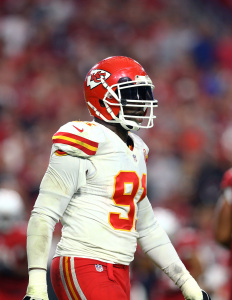 Houston enjoyed his healthiest season since his 22-sack campaign of 2014 and played his most snaps (86.9 percent) since that banner year, an encouraging sign for his future. He might not return to that level after rampant the knee trouble he’s experienced, but the Chiefs’ eighth-year edge man remains one of the best 3-4 outside linebackers in the game. The Chiefs will need to supplement him better going forward.
Houston enjoyed his healthiest season since his 22-sack campaign of 2014 and played his most snaps (86.9 percent) since that banner year, an encouraging sign for his future. He might not return to that level after rampant the knee trouble he’s experienced, but the Chiefs’ eighth-year edge man remains one of the best 3-4 outside linebackers in the game. The Chiefs will need to supplement him better going forward.
Hali will surely be released prior to the third and final year of his third Chiefs contract, and that will free up $7.69MM in much-needed space. The Alex Smith trade will create $17MM in cap room, and Derrick Johnson will come off the books as well. For a team that did not have much cap space during a John Dorsey era that did manage to produce some impact signings in spite of this, these expected transactions provide much-needed relief.
Ford’s fifth-year option comes in at $8.72MM, and the Chiefs face a complex decision here.
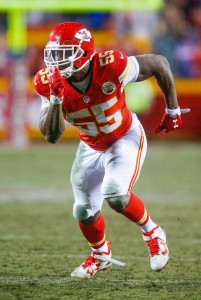 The 2014 first-rounder has not delivered what was hoped when Dorsey authorized that selection. That 10-sack season in 2016 looks like an outlier, because Ford was either buried behind Hali — despite the franchise wanting an excuse to play him — in 2014-15 or ineffective (2017). Last season, injuries limited Ford from building on his breakout ’16 slate. Provided Ford can pass a March physical, he is a release candidate.
The 2014 first-rounder has not delivered what was hoped when Dorsey authorized that selection. That 10-sack season in 2016 looks like an outlier, because Ford was either buried behind Hali — despite the franchise wanting an excuse to play him — in 2014-15 or ineffective (2017). Last season, injuries limited Ford from building on his breakout ’16 slate. Provided Ford can pass a March physical, he is a release candidate.
But will the Chiefs discard a (mostly) known commodity and someone who has never quite had the opportunity to line up opposite Houston for an extended period — the plan when the Chiefs picked the Auburn talent four years ago — to go after a replacement on the market or in the draft (without a first-round pick)?
Tanoh Kpassagnon could possibly help as both a down lineman or a stand-up ‘backer and will likely be asked to be a key player in 2018. The 2017 second-rounder is a bit of a tweener (6-foot-7, 280 pounds) for a 3-4 scheme, and the Chiefs used the Villanova product more as an edge defender as a rookie. He only played 158 snaps, which could have been expected from the raw talent out of a Division I-FCS program, but will be an intriguing piece going forward as the Chiefs reconfigure their front seven.
There are some options with 3-4 experience on the UFA market, but the top players are coming off severe injuries.
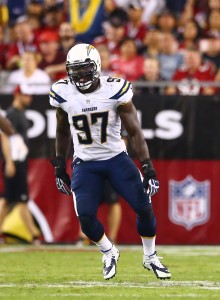 Alex Okafor and Jeremiah Attaochu, the latter of whom the Chargers chose not to play much since his six-sack 2015 season, could be in line for a notable raise. The outside linebacker-turned-defensive end played just 59 snaps last season and has only topped the 20 percent playtime barrier once. But he did play behind arguably the best edge duo in the game and is a 25-year-old former second-round pick. There’s upside here despite a lack of usage in recent years.
Alex Okafor and Jeremiah Attaochu, the latter of whom the Chargers chose not to play much since his six-sack 2015 season, could be in line for a notable raise. The outside linebacker-turned-defensive end played just 59 snaps last season and has only topped the 20 percent playtime barrier once. But he did play behind arguably the best edge duo in the game and is a 25-year-old former second-round pick. There’s upside here despite a lack of usage in recent years.
Okafor played in the Saints’ 4-3 setup last season but spent four years in the Cardinals’ 3-4. At just 27 and coming off a plus season defending the run and pursuing passers, Okafor saw an injury deny a likely robust market. Maladies have dogged the 27-year-old edge defender the past two years, and he’s coming off a torn Achilles’ tendon. He won’t be a safe investment. Trent Murphy is in the same boat. He registered nine sacks in a strong 2016 season but missed all of last season due to an ACL tear and will see his market affected.
Okafor and Murphy’s injuries, though, could be viewed as discount opportunities for teams who liked their pre-setback work samples. But the Chiefs already have an injury risk at outside linebacker, complicating one of these players’ routes to western Missouri.
If the search parameters are expanded to 4-3 ends, the talent pool widens to include the likes of Demarcus Lawrence, Ziggy Ansah and William Hayes.
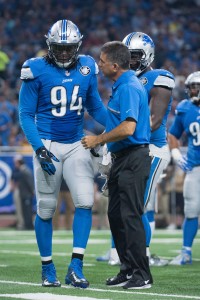 Lawrence is expected to negotiate with the Cowboys this month, and it seems likely the sides will work out a deal, especially given Dallas’ trouble to find edge rushers post-DeMarcus Ware. Ansah might not be worth what a team will pay him, but the former top-five pick did bounce back from his persistent ankle trouble and register 12 sacks (nine of them in three games, however). He’s going to be costly, and despite being a 2013 first-rounder, will be 29 by next season’s outset. (And even that age has been questioned.) Hayes continues to deliver underrated work, particularly as a run defender, but he’s going to turn 33 soon and has spent the entirety of a 10-year career in a 4-3 alignment.
Lawrence is expected to negotiate with the Cowboys this month, and it seems likely the sides will work out a deal, especially given Dallas’ trouble to find edge rushers post-DeMarcus Ware. Ansah might not be worth what a team will pay him, but the former top-five pick did bounce back from his persistent ankle trouble and register 12 sacks (nine of them in three games, however). He’s going to be costly, and despite being a 2013 first-rounder, will be 29 by next season’s outset. (And even that age has been questioned.) Hayes continues to deliver underrated work, particularly as a run defender, but he’s going to turn 33 soon and has spent the entirety of a 10-year career in a 4-3 alignment.
The first two don’t seem too realistic, but then again, the Chiefs managed to sign Jeremy Maclin for $11MM per year in 2015 when they had less cap space than they do now. Dorsey preferred to backload deals to free up near-term space. Will Brett Veach utilize this tactic to help a front seven that needs assistance at multiple spots?
The Chiefs could shift focus to the draft, but not holding a pick until No. 54 poses a slight problem. Kansas City has consistently delivered on Day 2 of drafts during Andy Reid‘s run, selecting the likes of Travis Kelce, Mitch Morse, Chris Jones and Kareem Hunt since 2013. This is encouraging considering the team’s current situation, although Dorsey now being out of the picture represents a key variable going forward.
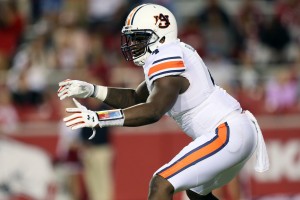 Bradley Chubb– or Arden Key-type players won’t be realistically available for the Chiefs, but this should be a primary focus come Draft Friday. Florida State’s Josh Sweat, Auburn’s Jeff Holland or Georgia’s Lorenzo Carter look like potential second-round options at this juncture. PFF rated Holland as Division I-FBS’ sixth-most productive pass rusher last season — a breakout campaign for the junior that ended with 9.5 sacks. Although, Holland registered just three sacks in two prior Tigers years. Also having to face offensive linemen in the nation’s best conference, Carter ranked 11th on this scale. However, the four-year player never recorded more than five sacks in a season.
Bradley Chubb– or Arden Key-type players won’t be realistically available for the Chiefs, but this should be a primary focus come Draft Friday. Florida State’s Josh Sweat, Auburn’s Jeff Holland or Georgia’s Lorenzo Carter look like potential second-round options at this juncture. PFF rated Holland as Division I-FBS’ sixth-most productive pass rusher last season — a breakout campaign for the junior that ended with 9.5 sacks. Although, Holland registered just three sacks in two prior Tigers years. Also having to face offensive linemen in the nation’s best conference, Carter ranked 11th on this scale. However, the four-year player never recorded more than five sacks in a season.
With the Combine nearly a month away, it’s early to assess second-day stock. But the Chiefs will need to be on the lookout throughout the offseason for Houston help.
Hali held that job for many years once Houston usurped him as K.C.’s No. 1 edge option, and with Ford not being the Hali replacement the Chiefs envisioned, the team’s current position is not strong — particularly long-term.
2) Find Jones up-front help: Across the board, 2017 was an ugly year for Chiefs defense. They ranked 28th in total defense, 30th in DVOA, 25th against the run and 29th against the pass. Bob Sutton‘s units have a bend-but-don’t-break history, and while Kansas City was 15th with 21.2 points allowed per game, last season marked a step back at a time when the franchise could ill-afford it.
Beyond Jones, the Chiefs’ future on the defensive line looks shaky.
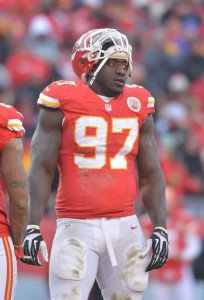 Bennie Logan is a free agent, and Allen Bailey could be a cap-casualty cut. Jones has proven to be a cornerstone player after two years, but the Chiefs’ defensive shortcomings cost them in another bitter playoff defeat. They need to address the point of attack, which Derrick Henry gashed during the Titans’ comeback.
Bennie Logan is a free agent, and Allen Bailey could be a cap-casualty cut. Jones has proven to be a cornerstone player after two years, but the Chiefs’ defensive shortcomings cost them in another bitter playoff defeat. They need to address the point of attack, which Derrick Henry gashed during the Titans’ comeback.
In an offseason that will likely see recent contracts for Johnson and Hali be shed, Bailey may be in the same boat.
It would provide the Chiefs $6MM in cap space to release Bailey while tagging the team with $2MM in dead money. They are already paying $4MM-plus in cap penalties for cutting Maclin, and Bailey will only be 29 next season. While the Chiefs don’t have a slew of ends ready to fill that spot, Bailey has not been a quality performer in a few years. PFF graded the career-long Chief as the No. 88 interior defender in the game last season, charting him as one of this positional grouping’s worst run defenders as well. The team might be wise to absorb the slight cap hit and move on.
PFF graded Logan, Rakeem Nunez-Roches and Jarvis Jenkins as worse. The Chiefs’ run defense played well during the season-saving December win streak, but without Jones in the second half of the wild-card loss, the team finished up its slate by allowing a season-high 202 rushing yards to the Titans.
Kansas City also saw no one besides Houston or Jones compile more than two sacks. Dorsey’s savvy Jones pick saves the franchise from having to reboot its entire line, but other than that, it could be tasked with doing so.
 This would be an ideal area to invest in this offseason, but the 2018 collection of potential D-line UFAs is not as good as it was in previous years. There are some high-profile solutions that will not come cheap.
This would be an ideal area to invest in this offseason, but the 2018 collection of potential D-line UFAs is not as good as it was in previous years. There are some high-profile solutions that will not come cheap.
Both Dontari Poe and Sheldon Richardson have regional ties, the former a five-year Chief and the latter a St. Louis native who attended the University of Missouri. Poe is a better player than Logan, with the usage-rate maven bouncing back in 2017 after a down 2016 showing, but the Chiefs did not put up much of a fight to keep him last year. Richardson figures to command eight figures per year and has not been the same player as he was early in his Jets run. Mitch Unrein enjoyed a surprisingly productive season in 2017, rating as a top-25 PFF interior defender, but he’ll be 31 and does not have an extensive track record of full-time productivity.
Other options in Frostee Rucker, Tom Johnson or even Haloti Ngata will all be in their mid-30s by the time the season begins.
Richardson’s ex-teammate Muhammad Wilkerson will soon be a cap casualty, and after two letdown seasons might not be incredibly expensive — at least, not compared to the extension he signed in 2016. At just 28, Wilkerson could have several productive seasons ahead of him. He just hasn’t shown much since breaking his leg in the 2015 season finale. Wilkerson’s market will be one of the more interesting non-quarterback situations to monitor this offseason.
But if the Chiefs intend to free up cap space, they’re going to be interested in spending it somewhere. One of these front-seven need areas should receive attention come March. This is also another area to look out for when Kansas City’s second-round pick comes.
3) Give Patrick Mahomes another weapon: During his entire Kansas City tenure, Reid has not placed a premium on having much depth at wide receiver. He’s continued to form rotations behind the No. 1 option of the moment, with a number of cogs functioning behind Dwayne Bowe, then Maclin and now Tyreek Hill. But this period’s also featured Smith, an accurate quarterback whose talents Reid maximized.
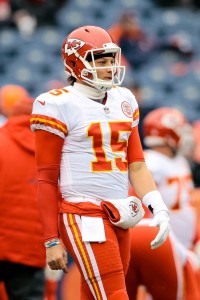 But it could also be argued the Chiefs limited Smith by ignoring this role for so many years. Kelce will continue to serve as K.C.’s de facto WR1, so it could also be argued that — like the Chargers during Antonio Gates‘ prime — the Chiefs do not need to devote valuable resources for a player who would be at best the fourth option in this offense. However, the Chiefs’ offense ground to a halt once Kelce left the field during the playoff loss. Hill had a marvelous year and should be ascending, but there are areas a complementary receiver could help the deep threat/rich man’s gadget player.
But it could also be argued the Chiefs limited Smith by ignoring this role for so many years. Kelce will continue to serve as K.C.’s de facto WR1, so it could also be argued that — like the Chargers during Antonio Gates‘ prime — the Chiefs do not need to devote valuable resources for a player who would be at best the fourth option in this offense. However, the Chiefs’ offense ground to a halt once Kelce left the field during the playoff loss. Hill had a marvelous year and should be ascending, but there are areas a complementary receiver could help the deep threat/rich man’s gadget player.
With Mahomes stepping in, things likely aren’t going to run as smoothly — at least, not at first. Although he showed considerable promise by being ready to step on a field last season and playing well in that debut, the rocket-armed passer remains raw. It makes more sense for the Chiefs, who will no longer have a franchise-quarterback salary on their payroll, to supply Mahomes with an additional auxiliary weapon since he might require more talent capable of winning outside matchups than Smith did to formulate drives.
Unlike the defensive front seven, there are more realistic components available on the wideout market. The Chiefs also do not have a veteran receiver contract on their payroll, though they’re probably planning to extend Hill in 2019. But for now, they could make sense for some of the many WR2-type pass-catchers out there.
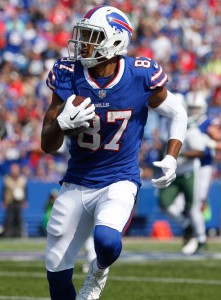 They almost have to spend here. Chris Conley is coming off an Achilles tear and is entering a contract year, and Albert Wilson and De’Anthony Thomas are UFAs. Former fourth-round pick Demarcus Robinson could develop into something, or he could merely become another cog in K.C.’s evolving WR2 rotation.
They almost have to spend here. Chris Conley is coming off an Achilles tear and is entering a contract year, and Albert Wilson and De’Anthony Thomas are UFAs. Former fourth-round pick Demarcus Robinson could develop into something, or he could merely become another cog in K.C.’s evolving WR2 rotation.
The Chiefs’ situation doesn’t point to a Jarvis Landry pursuit. They have their top two pass-catchers established. But they could use a possession target. Jordan Matthews fits this profile, coming off a down contract campaign and in search of a team with a more stable passing attack.
Matthews served as a chain-mover in Philadelphia. Working primarily out of the slot, he exceeded 800 yards three times — the third of which coming in Doug Pederson‘s now-immortalized Chiefs East setup. But Matthews’ Bills season went horribly, and it should affect his market. However, the Bills’ Tyrod Taylor-centered attack has not been a boon for wideouts — as Robert Woods and Marquise Goodwin showed — so Matthews comes with a bounceback appeal.
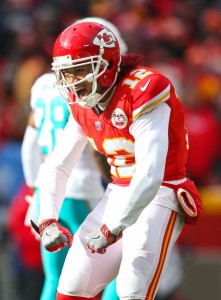 Kansas City could just bring back Wilson, who obviously knows Reid’s system, and keep the assembly line going. But after a strong contract year, he might not come too cheap.
Kansas City could just bring back Wilson, who obviously knows Reid’s system, and keep the assembly line going. But after a strong contract year, he might not come too cheap.
The ex-UDFA was a four-year contributor who enjoyed his finest season in 2017. The former Georgia State find made some quality plays in big spots en route to a 554-yard season — the most receiving yards by a Chiefs WR2 in a season since Donnie Avery in 2013 — and displayed elite-level elusiveness after catches. Wilson’s 15 missed tackles ranked third among WRs, and he also landed firmly on the Next Gen stats radar despite he and Robinson essentially splitting time as K.C.’s No. 2 wideout.
Kendall Wright is a more established player, but he qualifies as a station-to-station target at this point. And after two years of being buried in Tennessee, Wright once again became a competent target and hauled in 59 passes for 614 yards with a shoddy quarterback situation in Chicago. At just 28, he makes sense as a short-term add, albeit with little upside. Neither he nor Dontrelle Inman look to represent that big of an upgrade from Wilson, if any. But Inman — who is already 29 despite having just four years of service time — could serve as intriguing buy-low option based on his 2016 season (58/810/4) in San Diego.
If the Chiefs turn to the draft to help here — as they have with Conley, Robinson and Jehu Chesson the past three years — it likely won’t be a high pick. There are higher-priority areas of need on which to focus, and this franchise has not selected a wideout in the first or second round since Scott Pioli‘s disastrous Jonathan Baldwin investment in 2011.
A midlevel free agent makes sense, but if that doesn’t happen, it’s hard to see the Chiefs using anything higher than a third-round choice to bolster a spot they clearly don’t hold in high regard.